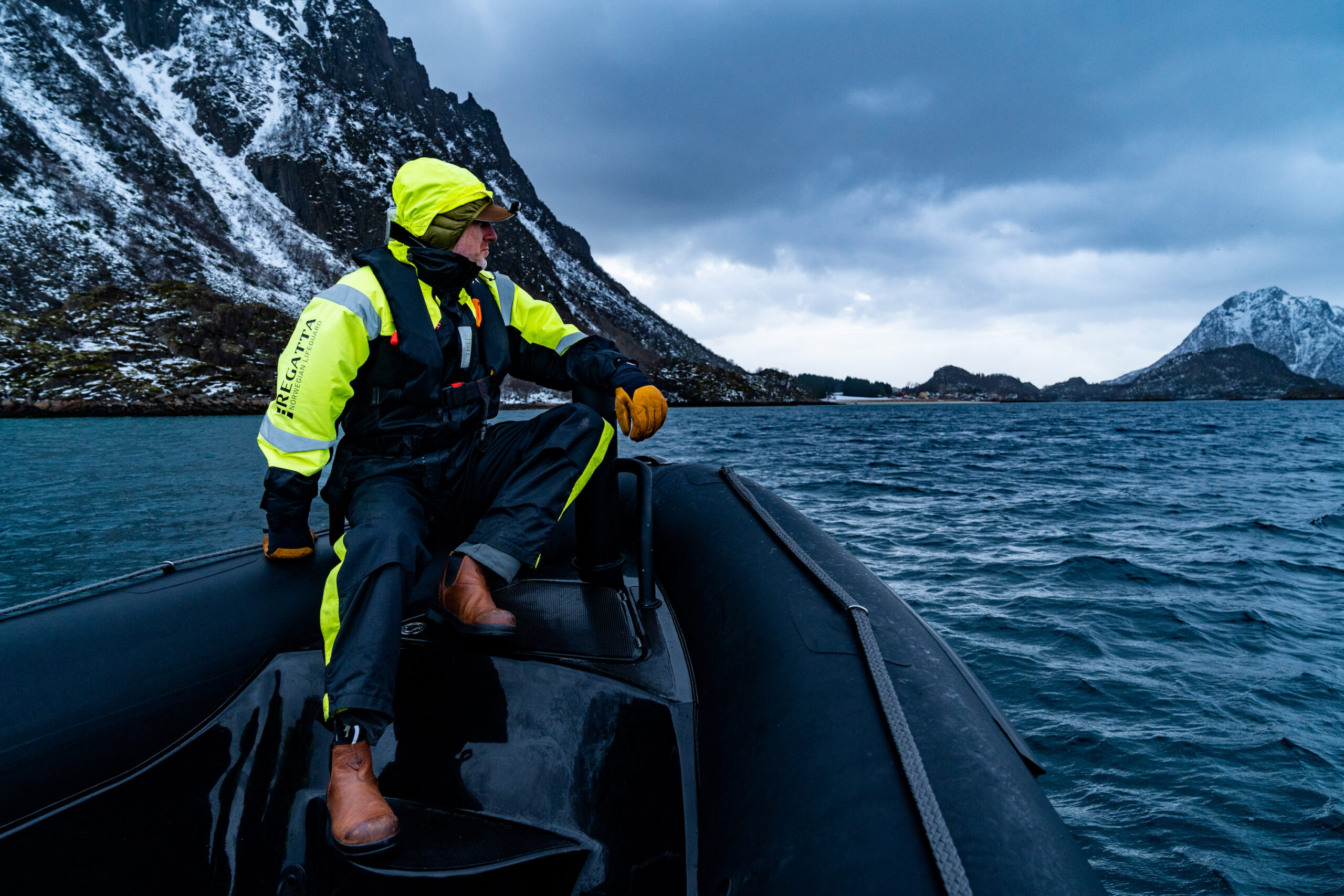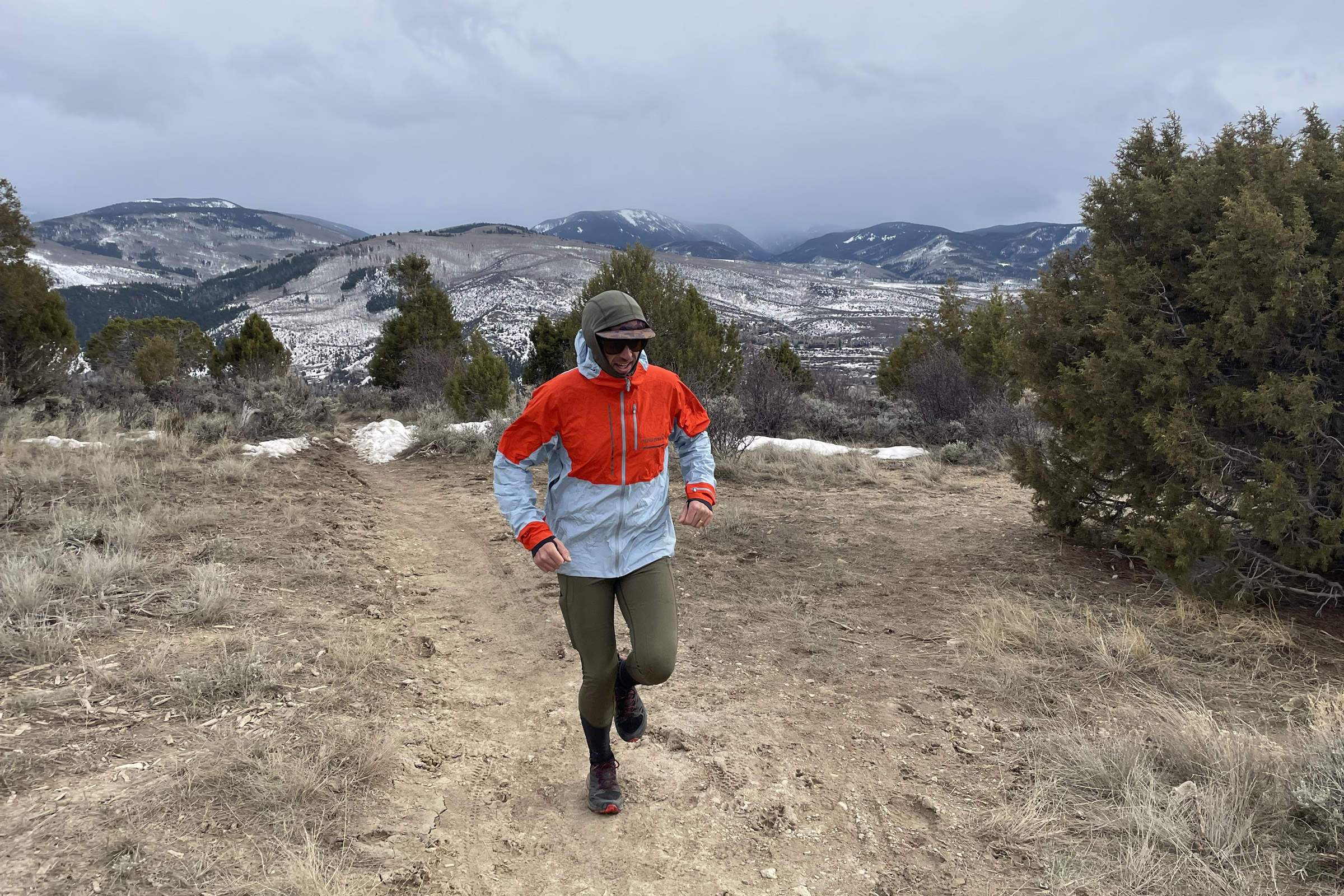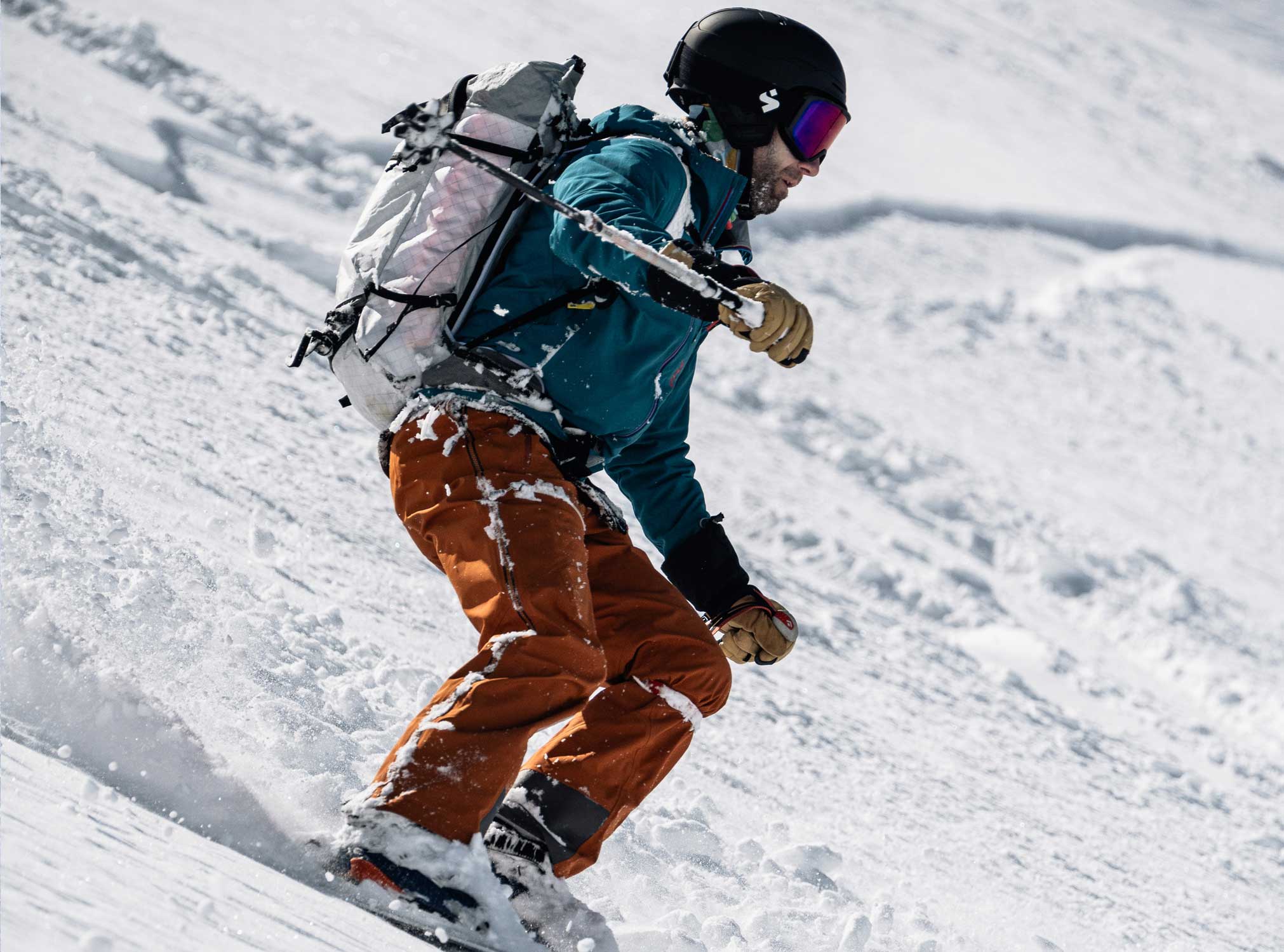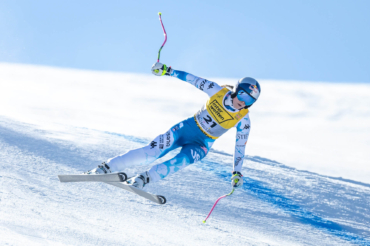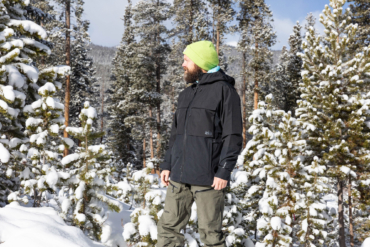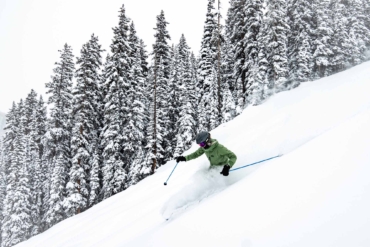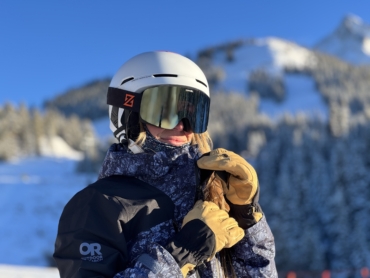While the wind was gusting the falling snow into my back, I had the front of my jacket partially unzipped and the pit zips open. I was at a very comfortable temperature while ascending the skin track broken before me. This was on the slopes above the Östnes Fjord in Lofoten — the most prominent archipelago reaching out into the Northern Atlantic Ocean along the western Norwegian coast.
And the ski jacket and pants I wore from Norrøna are named after this archipelago. These were the very conditions the Norrøna designers were catering to when they envisioned the brand’s freeride line.
The culmination of all of these factors put a grin on my face as our ski guide came to a stop amid a swirl of snowflakes. I zipped the jacket back up while I stripped my climbing skins and pointed my skis down the fall line for another lap of shushing bliss.

Now 100 miles north of the Arctic Circle, it only took two short commercial flights to arrive from Oslo, Norway’s capital city at the very south end of the country. I arrived in the dark, even though it was late in the afternoon. Arctic winter darkness still loomed. Our guide for this 5-day adventure, Ragnhild (Raga for short) was raised on Lofoten. She led us to a van to take us to our lodging for the next 2 nights.
I’ve been to Norway before, even further north than this, but never to Lofoten. Rumors of its beauty and adventure piqued my excitement. I was here to test the most namesake gear Norrøna makes — a direct ode to the sun, snow, wind, waves, peaks, and trails of Lofoten.
Key Gear: Norrøna Lofoten GORE-TEX Jacket & Pants
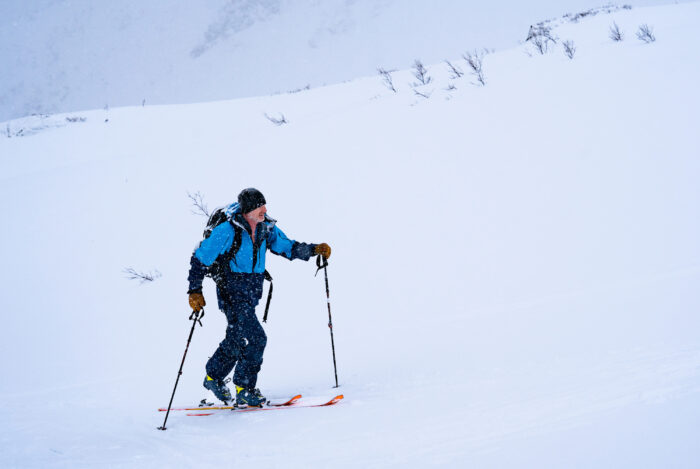
This kit is the bread and butter of the Lofoten collection, which includes midlayers, insulated layers, socks, backpacks, and more. Over half the synthetic fibers in the Lofoten GORE-TEX Jacket ($599) and Pants ($549) are from recycled materials. It uses GORE-TEX to offer a 28,000mm waterproof rating — enough to withstand pounding rain.
The jacket is made with a light three-layer 40D nylon face and has a knitted interlock backer for comfort. The pants are made with a durable three-layer 70D and 160D nylon shell and the bottom leg is reinforced with Vectran (a material found in the Mars Pathfinder airbags) to stand up to snags from crampons or contact with ski edges.
While I was skiing down, Östnes Fjord came and went from my view as the clouds and thick falling snow blew around me. Even though the wind tried to control my course, the water-resistant YKK zippers, powder skirt, and locked-down cuffs (along with the matching Lofoten GORE-TEX gloves, of course), kept the swirling elements at bay while I stayed warm and dry on the inside.
- Pros: Very durable, very weatherproof, jacket and pants zip together, athletic cut, contains recycled fibers
- Cons: Minimal pockets, no RECCO
Norrøna Hvitserk: Adventure Travel
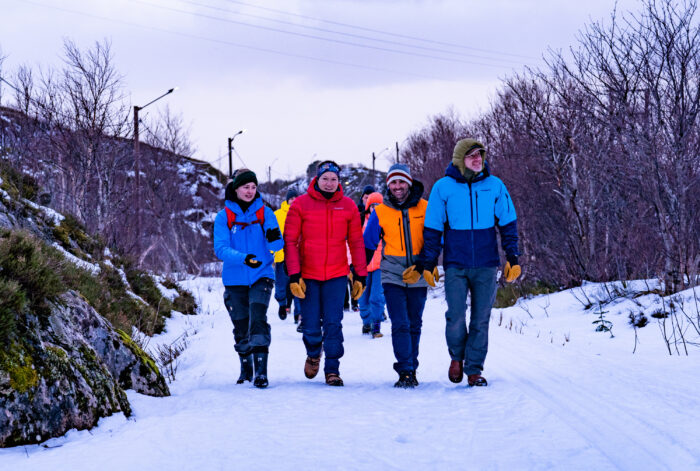
So, how did I get here? Actually, with the brand. Norrøna is not the first apparel/gear company to offer adventure travel, but it might be the oldest (even if only by just a few years). Founded in 1929 (compared to REI in 1935, though REI wasn’t making its own gear then), Norrøna joined forces in 2020 with the first travel company in Norway, Hvitserk (the “H” is silent). Both brands have always had a fierce commitment to sustainability recognizing the need to protect the wild places their founders, employees, and customers love.
In the ’70s, the founder of what was to become Hvitserk, Ulf Prytz, was taking Norwegians to explore and see the wonders of the world beyond Norway. A base in Kenya, Kilimanjaro was one of the more popular destinations, and the itineraries expanded from there. Then the team at Hvitserk recognized they had the expertise and opportunity to share the beauty within Norway itself, and started building a guide team of local experts throughout Norway.
As a travel writer and a gear tester, I was invited on one of these guided trips to share my firsthand experience. The “Winter in Lofoten” itinerary mostly includes guided nature-focused adventures, local excursions, and local meals. Our group skewed to the more active side of the spectrum, and Raga was happy to oblige. Here’s a sample of how we spent our days, and the gear we tested along the way.
Day 1: Sea Eagle Safari
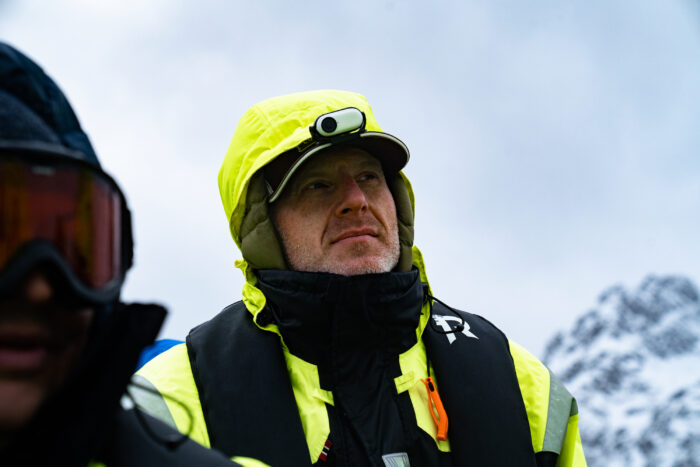
Our first adventure was sea eagle sightseeing. We zipped into oversized coveralls with built-in buoyancy, donned inflatable buoyancy vests, and boarded a RIB (Rigid Inflatable Boat). Complete with goggles to keep the sting out of our eyes from the wind and salty sea spray, we zoomed out of the bay and away from the town of Svolvær, the largest on the archipelago.
Key Gear: Norrøna Men’s Falketind Down 750 Hood
While the oversized overalls were the perfect outer layer for the Sea Eagle Safari adventure, it was important to bring the right amount of insulation for under that suit. Even though it was in the low 40 degrees Fahrenheit, the wind chill from the boat going up to 50 knots (57 mph) made it feel like 25 degrees F.
And, while we did have to make some effort to hold on and stay in the boat, we were mostly sitting still. The 750-fill Responsible Down Standard (RDS) certified down of the Falketind ($349) kept me cozy for the whole safari.
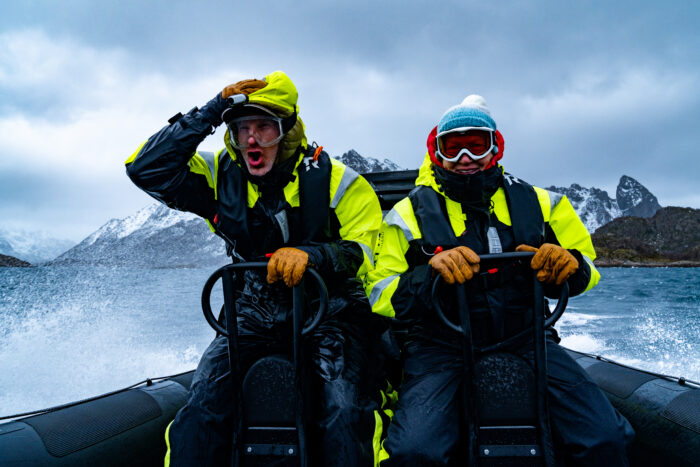
Of course, the jacket was used extensively on other days of this arctic adventure — with plenty of use while not tucked inside a set of coveralls. I appreciated the elastic cuffs and waist to keep warm air in the jacket and the reinforced elbows and shoulders bump my confidence in durability. But that durability does come at the cost of making the jacket a little heavier, and maybe not a first choice for long backcountry ski tours or backpacking trips.
To be fair, Falketind is Norrøna’s mountaineering collection where durability is important. This is what it’s built for — providing protection and the utmost durability without a second glance. Back home in Colorado, the DWR treatment was put to the test on a wet walk home picking my kids up from school. The water beaded nicely and shook dry once back in the garage.
- Pros: Warm, reinforced shoulder and lower arms, effective DWR treatment, contains recycled fibers
- Cons: Low pockets can get covered by harness
Day 2: Hiking & Scrambling

The main activity of the day was actually cod fishing — a 5-hour venture on a traditional 40-foot fishing cutter. So, a few of us were keen on a good hike in the morning to burn off some calories and to move our bodies before we got on the boat. This resulted in Raga taking us to a 0.75-mile, 900-vertical foot hike/scramble up to an overlook of the village of Henningsvaer (famous for a soccer field carved into the rock on one of the little islands).
Key Gear: Norrøna Falketind Flex 1 Pants
These softshell pants ($199) are the lightest and most breathable mountaineering and hiking pants in the Falketind collection. The pants have a gusseted crotch which, along with the Flex 1 fabric, stretched and moved beautifully with me as I high-stepped up the boulders. The single-ply Bluesign-certified fabric buffeted the wind while allowing vapor transfer to stay comfortable. The pants have an adjustable waist for a perfect fit. I didn’t use the zippered side vents on this 32-degree F day, but they’ll come in handy on warmer missions.
- Pros: Lightweight, good venting options, stretchy, contains recycled fibers
- Cons: Horizontal hand pockets, short fly
Day 3: Sea Kayaking
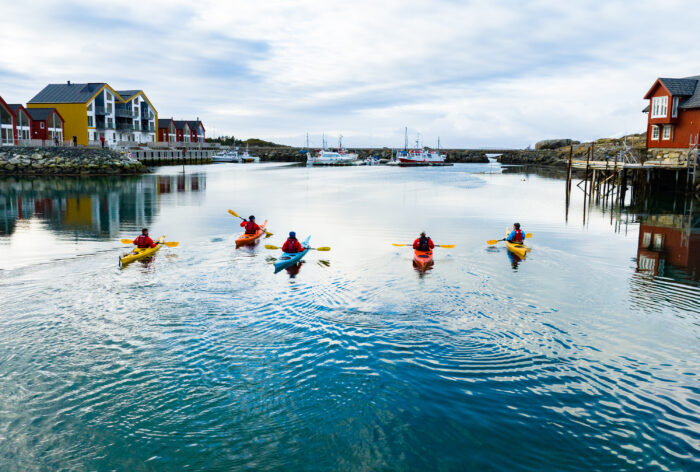
On Day 3, we departed our cozy Skårungen Lodge in Kabelvåg, and woke at the beautiful Hattvika Lodge in Ballstad. A paddle across the bay, through narrow gaps of rocks and along the rugged shoreline, was in order. We geared up with our base and midlayers, and then stepped into a full dry suit to protect against the possible sea spray and any accidental immersions.
Key Gear: Norrøna Trollveggen Thermal Pro Jacket
Part of my insulation under the dry suit was the Trollveggen Thermal Pro Jacket ($199), a fuzzy fleece layer from Norrøna’s Alpine Climbing collection called Trollveggen. The jacket is made from Polartec Thermal Pro fabric — a stretchy, high-loft synthetic fleece that traps warm air next to the body when layered with a shell like a dry suit. Without a shell, the layer provides excellent thermal regulation, allowing body vapor to escape during more aerobic activities.
This jacket balances being a substantial layer for insulation while also being very lightweight and never feeling bulky when worn on its own or under more layers. I used it a lot under the Falketind Down 750 Hood mentioned above, especially on frigid early morning activities and into the evening after sunset.
- Pros: Lightweight, agile/moves with you, warm
- Cons: No wind resistance
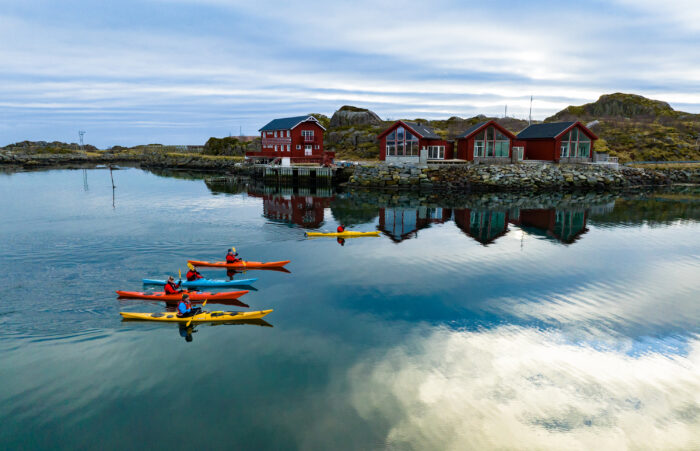
Day 4: Backcountry Skiing
And, we circle back to the beginning: myself, Raga, standing atop blustery slopes on the Östnes Fjord.
This snapshot of our 4 days of testing gear wasn’t even close to everything we did during the tour. There was of course incredible dining, beautiful accommodations, sauna and hot tub sessions, local hikes, and easygoing wanderings of a few of the fishing villages that have been here for centuries. Everything Norrøna Hvitserk arranges on their tours comes from an “earth-first model of conscientiousness” to how the activity will impact the local and global environment.
My flight back home departed the same evening as our ski day. And, yes, I was able to squeeze a shower in before heading to the airport.
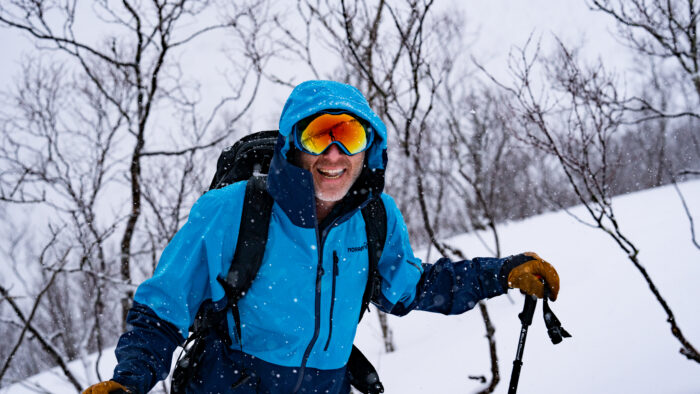
I’d call the trip a success. There was never any doubt of Lofoten’s beauty, but it was incredible to witness it firsthand — especially in the winter with fewer visitors. But, being there in the winter does require the right gear to stay warm and comfortable.
Sure, it doesn’t have to be by Norrøna, or with Hvitserk, but I can now attest to the quality of each of these brands and recommend them both without hesitation. It was great to use the gear inspired by this landscape, quite literally — with Norrøna’s Lofoten collection.
